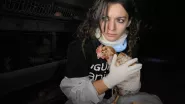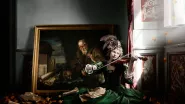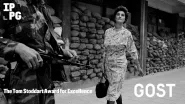Social media’s censorship of women’s bodies is deeply problematic. The ever changing guidelines for what is and isn’t acceptable on platforms such as Instagram, Twitter and Facebook are inherently sexist and arbitrary. The intense suppression of the female form harms artists and reinforces dangerous and warped ideas regarding value that women have been battling for generations. Moreover, these platforms are not even consistent with the content and accounts they remove, sometimes removing non nude images that depict larger women, menstruation, and pubic hair (to name a few). The constantly reinforced message being that female bodies are obscene if not passed through a patriarchal filter and should be hidden when not. After much public outrage Instagram and Facebook did start to allow images of breastfeeding and mastectomy scars, which is a win if you ignore the fact that it had to be fought for in the first place.

Social media is not completely against the female body, particularly when it is used in the same, repetitive, exploitative trope loved by advertisers. The young, thin, almost hairless, cellulite free, blemish free and rarely seen out in the world ideal of a woman has been deemed the only acceptable version of the female body for public consumption. It is this absurd fantasy that is propagated and protected by social media censors that hurts how women see themselves and continues to remove naturally existing women from visible culture. We will never be able to see the beauty in one another, in all its various forms, or ourselves, when images of us in our honesty are removed and labeled as inappropriate or, possibly worse, “in violation of community guidelines”.
Much of the internet is frustrated, insulted and has started exposing the absurdity of body censorship on social media. Campaigns like #FreeTheNipple, #FatIsNotAViolation and
are actively critiquing the platforms for sexist and pointless banning. Female photographers, perhaps due to feeling particularly targeted because of the exclusion of photography as “art” when determining if nudity is in compliance with community guidelines, are focusing more and more on the topic of censorship on social media. Jennifer Adler (
), covers a wide variety of feminist issues like censorship, abortion, sexuality, menstruation, self acceptance, and aging. Her images are beautiful and caring without shying away from the truth of the subject whether its blood or wrinkles or flesh. Adler points out that the social media ban on nudity would likely be tolerable, if it was actually enforced in an equitable way.

But the reality shows a very different truth. Pictures from male models aren’t removed if they are topless, while women aren't allowed to show their nipples. In general, the censorship is much faster if you have a marginalized, fat, hairy, “not sexy” body on your post. Another frustrating fact is that pictures in which women get objectified are mostly allowed by the guidelines. [They] not showing the whole range of human beings, which makes it so dangerous.

She has created a series of images where a female body is censored with phones and tablets replacing her body parts with acceptable male body parts in a poignant critique of our double standards. Her work focuses on creating a culture of discourse rather then trying to provoke.
My photography is meant to elicit reflection, laughter and, above all, mutual discussion. The images to which we are exposed every day shape both our understanding and our perception of our environment. The more pictures that stimulate reflection and the more we challenge the status quo, the more likely mindsets and attitudes will change.

Sandra, FFU contributor and creator of
has been sharing images sent from other users as well as her own that had been removed by social media . Sandra’s project started after she noticed a trend on the platforms targeting women and limiting the representation of female bodies. She began noticing that, regardless of nipples or nudity, many of the accounts she was following were being banned for different reasons, which suggested the issue was getting worse. She noticed that “the images more likely to be censored share some similarities: their subjects hold control over their representation, usually through self-portraiture or a collaborative approach, and explore notions of identity and empowerment 'outside the norm'.” One of the main topics brought up on the account is the question of how the line is drawn between art and lewdness. Social media’s willingness to allow nudity in classical forms of art suggests that they understand their is a culturally acceptable space in which we can all, at any age, view the naked body. The exclusion of photography as an acceptable art form in which to discuss the human, specifically female, form is not only insulting to generations of photographers who fought to raise photography to an art form, but also to the intelligence and discretion of their users.
Sandra’s account highlights the often sentimental and intimate images of women removed by censors despite often having not even violated the guidelines. Many of the photographers behind the submitted images are professional artists whose work is by no reasonable definition pornographic. The only clear message received by removing these posts are that female bodies, especially when shared by women for women, are unacceptable and liable to punishment. Art is meant to challenge us, to challenge our ideas, preconceived notions, learned attitudes and to remind us to question the world around us. To censor that is a disservice to all of us.

Jannica Honey
has been battling the censors for years often being flagged for images that do not even explicitly break the nudity guidelines. She put an effort in to make sure she wasn’t posting images of nipples, and her images were still being removed. One image that was particularly ridiculous to have been removed was an upclose image of a stomach with stretch marks as a result of carrying twins. When she challenged the removal, they maintained it was inappropriate. The message clearly being that if you are not desired, you are not to be seen. The trend Honey has seen with her work is that the “wild, natural, unkempt woman get removed, meanwhile the woman that fits the male gaze doesn't break the community guidelines.” Meanwhile obviously pornographic content with the barest of stickers covering as little as possible are acceptable despite the overtly sexual intent. The entire censorship process appears arbitrary and inconsistent. Women, it seems, may only be discussed online when they are not discussing themselves and focusing on male viewers.

We see effects of violence against women in the media constantly, but the natural reality of womanhood is attacked and censored. We see how we may be punished, but not how we may be free. We still have an epidemic of female assault victims being blamed for the violence against them. It is fair, in part, to blame a society that refuses to fully see and respect women in their entirety. When you reinforce over and over again that there is something wrong with a group of people, it is easier for others to see them as less and treat them accordingly. There are countless examples of this around the world throughout history.

In this case, reinforcing that women are inherently dirty (menstruation, vaginas, sex for pleasure, naked in almost any context) we encourage people to interpret their behavior and bodies through that lens. It is no surprise then, that women are disproportionately victims of abuse, sexual and physical violence and harassment. We are taught that many aspects of our natural bodies are shameful, and when we try to change the public dialogue in order to make a place for ourselves, we are flagged, banned or removed. We can see the proof of it reflected in our news and entertainment media where graphic depictions of violence against women are common, but an honest discussion of menstration would be unthinkable.

When was the last time you saw a period commercial use red to denote blood? When women like Kupi Kaur post images depicting the everyday reality of menstruation, they are censored. Blood is not censored on social media. However a suggestion of menstruation via an image is removed, not because of any nudity or sexual indecency, but because women, in the eyes of society, are by their nature indecent. Not unlike how at some random point in history we decided that men's nipples were okay and the more functional female breast was perverse. Women exist in a larger space then society is willing to let us. We know how the male gaze prefers us, it has been made very clear. It's the world's turn to consider how we see us. A good start would be to create a more equitable way to treat bodies on these platforms. We deserve better. We demand better.




